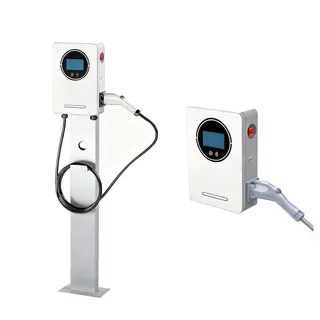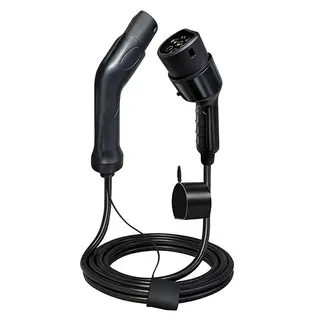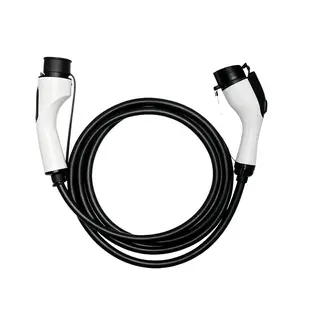With the popularization of electric vehicles, charging piles, as an important supporting facility, have received increasing attention in terms of their performance and safety. However, during operation, charging piles generate a large amount of heat, especially under high-load conditions. This not only affects performance but may also cause potential safety hazards. Therefore, how to effectively solve the heat dissipation problem of charging piles has become the key to ensuring their long-term stable operation.
During operation, especially in the fast-charging process, EV charging piles generate a large amount of heat. This heat mainly comes from key components such as power modules and cables. Taking a 60 kW charging pile as an example, its module heat dissipation can reach 3000 W, which is three times the heat dissipation of an outdoor communication cabinet of the same volume. If such a high amount of heat is not dissipated in time, it will cause equipment overheating and even potential fire accidents. Therefore, the heat dissipation system is crucial for charging piles. It not only ensures long-term performance and reliable operation of the equipment but also provides users with a safe and efficient charging experience.
After understanding the importance of heat dissipation, let us further explore the main types of cooling systems used in charging piles. At present, the most common cooling systems on the market are mainly two types: air cooling systems and liquid cooling systems. These two systems have their own characteristics and are suitable for different application scenarios and requirements.
The air cooling system is currently the most widely used heat dissipation method for charging piles. It uses fans to provide continuous and stable airflow to take away the heat generated during charging, thus cooling the power modules and other key components. This system has the advantages of simple structure and low cost. It can effectively prevent equipment overheating and ensure long-term operation under efficient and low-noise conditions.
However, conventional air cooling systems also have some shortcomings. Due to long-term fan operation, outdoor dust can easily enter the interior of the charging pile, which not only affects the heat dissipation effect but may also contaminate other precision electronic components. In addition, when facing high-power charging piles ranging from several hundred to over a thousand kilowatts, traditional air cooling systems often fail to meet the heat dissipation demand.
The liquid cooling system has gradually emerged in recent years as a highly efficient cooling method. It achieves heat balance through the circulation of coolant inside the charging module. After absorbing heat from the module, the coolant flows through a radiator and is cooled by a fan, ensuring that the liquid remains at a low temperature so it can re-enter the system loop. Liquid cooling systems have the features of low noise, high efficiency, precise temperature control, environmental friendliness, and safety, enabling better support for the development of the electric vehicle industry.
A special circulation channel is designed between the cable and charging gun. Coolant is added to the channel to achieve heat dissipation. The liquid circulates through the system driven by a water pump to carry heat away. This cooling method not only effectively reduces the internal temperature of the charging pile but also improves charging efficiency and extends equipment service life.
We have already learned that air cooling and liquid cooling are the two main types of heat dissipation systems currently used in charging piles. However, with the increasing demand for faster charging and higher efficiency, the heat dissipation requirements of charging piles are also growing. Relying solely on traditional cooling systems is no longer sufficient to meet the high performance requirements of modern charging piles. Therefore, the optimization design of heat dissipation systems to improve performance and reliability has become an inevitable trend in the industry.
To improve heat dissipation efficiency and protective performance, some advanced cooling systems adopt a hot and cold airflow isolation design. This design divides the charging pile into two working cycles that are isolated from each other, achieving waterproof and dustproof performance. The two cycles continuously exchange heat through the heat exchange core, while the hot and cold fluids remain completely separated. The heat exchange carrier and powered fans in both channels allow efficient cooling. Louvers and filter mesh sets at the air inlet and outlet provide effective heat exchange without air mixing, further enhancing equipment protection. This design not only prevents dust and moisture from entering the interior but also creates ideal temperature and humidity operating conditions, while maximizing heat exchange efficiency and minimizing pressure drop issues.
In the design of the heat exchange core, stamped convex structures are used as supports to ensure high strength and tightness of the airflow channels, providing resistance against high air exchange pressure. Before permanent deformation of the heat exchange plates occurs, the maximum pressure tolerance of the heat exchange core is 800 Pa. By increasing the thickness of the plates and adjusting the structure, the maximum pressure tolerance can reach 1200 Pa. The inlet and outlet edges adopt five-layer crimping and corrugated locking technology, resulting in stronger edge strength and more reliable sealing. All joints are sealed with sealant to ensure airtightness. Various airflow direction options are available to support different fan configurations, and different heat exchange plate materials can be used according to user environmental requirements.
For liquid cooling systems, the circulating function of the water pump is the key factor. A high-quality pump not only improves heat dissipation performance but also has a long service life and requires no maintenance, thus enhancing charging performance. When selecting a pump, parameters such as flow rate, head, power, and efficiency must be considered comprehensively to ensure it meets the heat dissipation requirements. Meanwhile, optimizing the pump design helps improve operational efficiency and reliability while reducing energy consumption and noise.
Next, we will explore the actual application and performance of cooling systems in charging piles. Through real cases and effect evaluations, we can more intuitively understand the performance and advantages of different cooling systems in real-world scenarios.
Power module cooling is crucial in the cooling system of charging piles. Fans circulate cooling air around the power module to ensure ideal performance during fast charging, which is critical under high charging current. High-heat electronic components in fast charging piles require dedicated fans for targeted cooling to prevent overheating and extend service life. In practical applications, optimized cooling system design effectively reduces the temperature of power modules, improves operating efficiency and stability, and supports fast charging performance.
In addition to module cooling, overall enclosure cooling is also very important. For DC charging piles, with power ranges of 30 kW, 60 kW, and 120 kW, and efficiency generally around 95 percent, the remaining 5 percent of energy becomes heat loss, equal to 1.5 kW, 3 kW, and 6 kW. For outdoor equipment, this heat must be discharged. Otherwise, it will accelerate the aging of the equipment. Therefore, the enclosure design requires waterproofing and dustproofing to prevent short circuits and signal interference. Current common cooling methods include natural cooling (mainly heat sinks), forced air cooling, water cooling, and air conditioning. Due to constraints of size, cost, and reliability, most companies currently adopt forced air cooling. However, this method has limitations, such as being prone to interference by dust, corrosive gases, and moisture. Therefore, using enclosed hot and cold airflow isolation and more advanced cooling technologies can effectively solve these problems, improving both heat dissipation and protective performance.
Heat dissipation is the key to ensuring long-term performance and reliable operation of charging piles. By using different cooling methods, such as air cooling and liquid cooling, combined with technical measures such as hot and cold airflow isolation design, heat exchange core optimization, and water pump selection and optimization, the heat dissipation effect and protective performance of charging piles can be effectively improved. In practical application, optimized cooling systems can reduce the temperature of power modules and internal enclosure environments, improve equipment stability and service life, and provide users with safe and efficient charging services.



